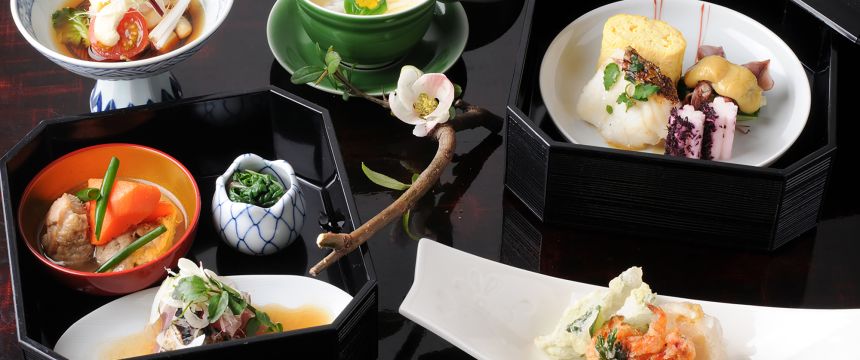Shodo Island, Kagawa Prefecture - Shikoku
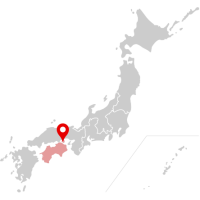
Hundreds of small islands dot the waters of the Seto Inland Sea, which lies between Japan’s main islands of Honshu, Shikoku, and Kyushu. The second largest of these small islands is Shodo Island, part of Shikoku’s Kagawa Prefecture. Famous as the birthplace of Japanese olive cultivation, Shodo Island is also home to more traditional industries, including the making of somen (thin wheat noodles) and the brewing of shoyu (soy sauce).
The island is blessed with both beautiful beaches and rugged mountain landscapes as well as a Mediterranean climate, warm and dry. Olive farms and terraced rice fields stretch across the hills, and in fall, changing leaves add a fiery touch of color to the mountains of the island’s interior.
Chart a course for the Seto Inland Sea to discover Shodo Island’s diverse industries, its stunning vistas, and its delicious delicacies.
A Small Island with an Important Culinary History
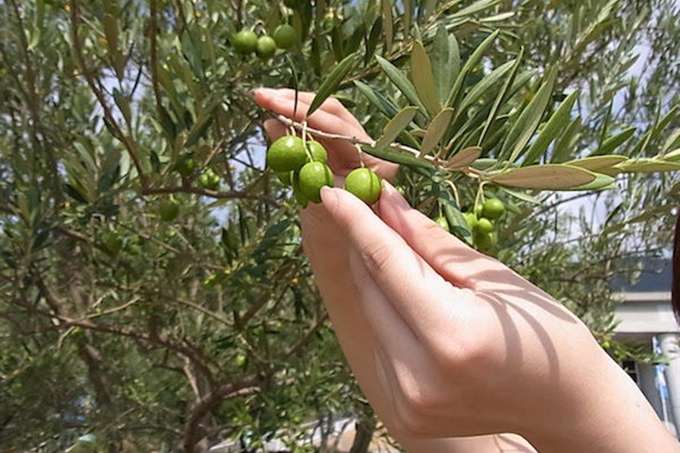
Olives have been cultivated on Shodo Island for over one hundred years. Somen and shoyu, however, have histories on the island that stretch back much further—approximately four hundred years. All three industries, however, are central to Shodo Island’s contemporary identity.
The size of the island makes it easy to enjoy the products of all three industries, so prepare yourself for a delightfully delicious stay.
Luxury Experiences with Island Oil at Shimayado Mari

At Shimayado Mari, a ryokan (Japanese-style inn) on the island’s south side, you will find that olive oil can benefit your body, both inside and out.

The ryokan uses olive oil in both its cuisine and its aesthetic treatments for a truly sumptuous stay.
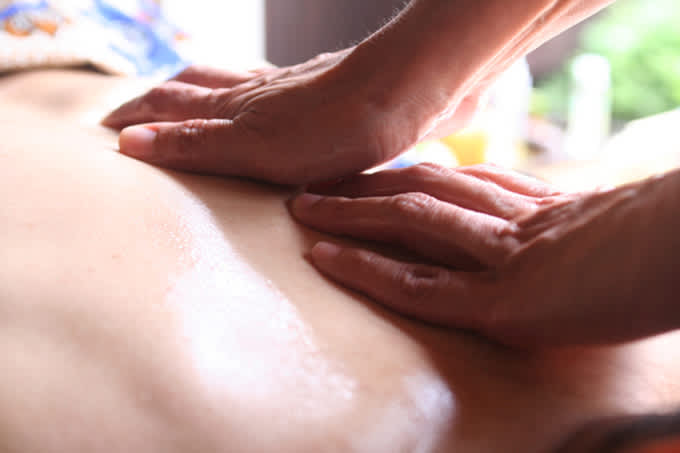
Start your stay with a luxurious massage. The treatment uses warmed olive oil from olives cultivated on the island and will leave your skin positively glowing.

In the morning, you can also partake of olive oil and olives with your breakfast. Shimayado Mari’s specialty is olive gohan, rice topped with local olives that gleam like jewels, served in an earthenware pot.
Delight in the rich aroma and incredible taste of local olives and rice, and drizzle oil from Takao Nouen Olive Farm over it all for an even more luscious experience—truly the epitome of olive-oil opulence.
Explore Japanese Olive-Oil Production at Takao Nouen Olive Farms
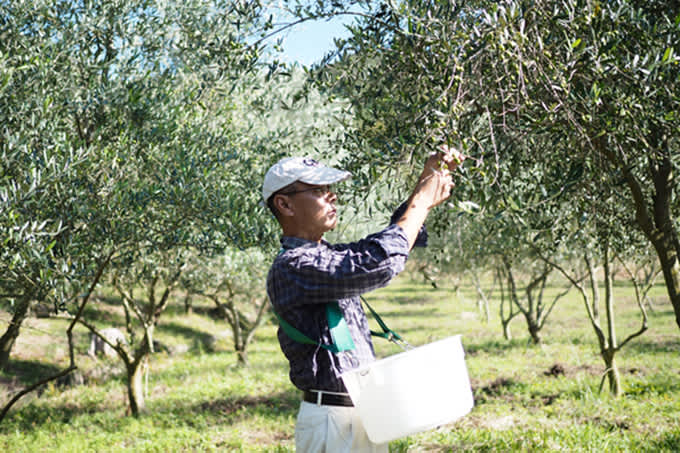
Now that you’ve enjoyed locally produced olive oil, drop by Takao Nouen to see how it’s made and to sample some of the varieties. Aim for harvest season, which runs from around mid-October to mid-November, to make the most of your visit.

Although he is not always able to provide tours, Takao Toyohiro will, if possible, show you around and fill you in on everything you’ve ever wanted to know about olive oil. If you’re lucky, there will be a fresh harvest of olives ready to be made into oil.
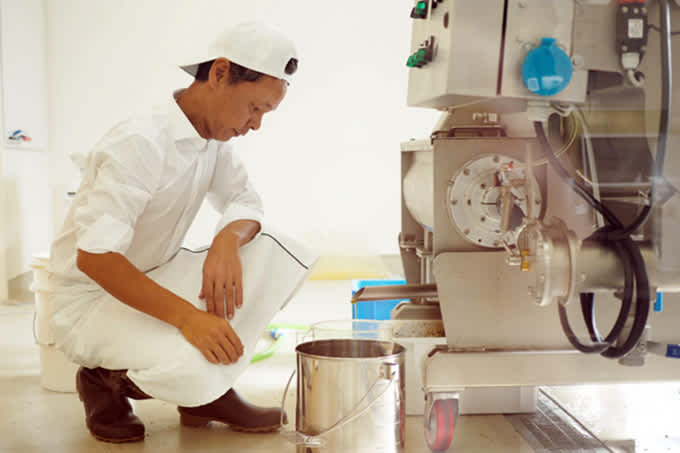
Once the olives are sorted and washed, they continue on to be pulverized, kneaded, and processed further until a beautiful, golden oil is attained. The whole process takes just an hour or two but requires Mr. Takao’s complete concentration to ensure a high-quality oil. The farm having won first place at the Paris international competition Olio Nuovo Days in 2018 and 2020 suggests that his dedication is paying off.
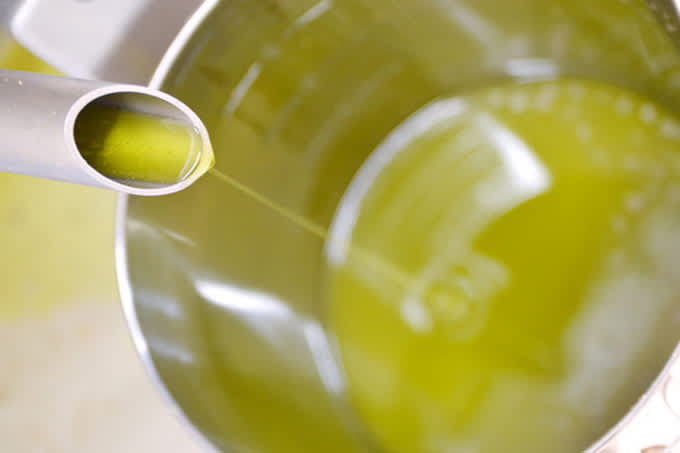
You can even taste the freshly made oil for yourself. The just-processed oil has yet to be filtered, and the small pieces of olive flesh that remain in it add an extra richness to the flavor, which is sharp and savory, with a slight bitterness and honey-like sweetness. The aftertaste is refreshing.
This is Shodo Island olive oil—rich, luxurious, and well worth the trip for a taste.
Fresh Somen at the Noodle Factory Nakabuan
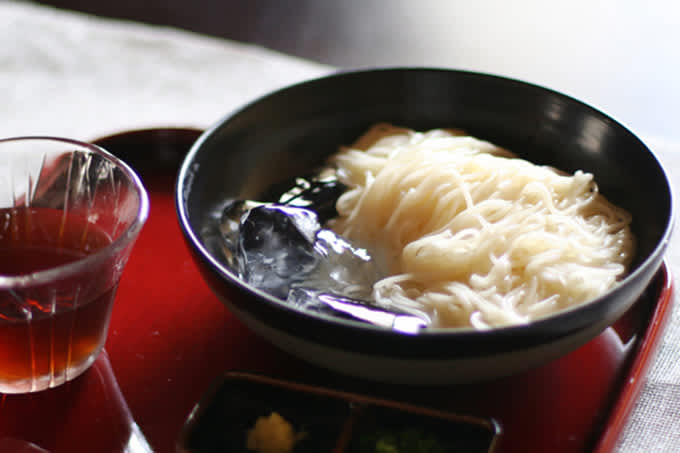
Although most of Kagawa Prefecture is known for its thick wheat noodles called udon, Shodo Island is known for a much thinner wheat noodle called somen. Somen is a standard summer food in Japan, the quick-cooking noodles that are served chilled with dipping sauce make an easy, refreshing meal. The somen of Shodo Island, a tenobe somen, which is stretched by hand, is so highly regarded that it is considered one of Japan’s three best somen varieties.
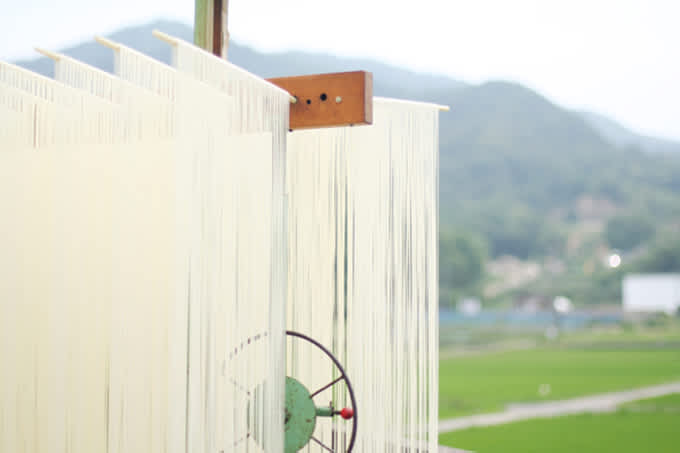
With its fairly dry climate and its winds from the mountains and the sea providing natural power for drying the noodles, the island is perfect for somen production.

See for yourself how the traditional noodles are made at Nakabuan, where you can tour the factory, try your hand at stretching noodles, and even enjoy a bowl of nama (undried) somen.
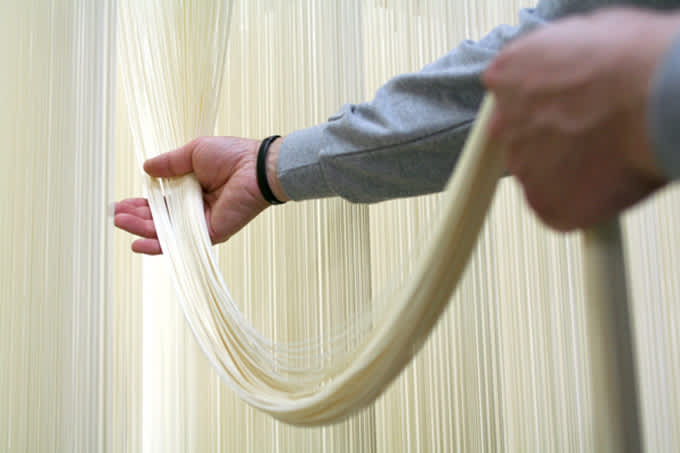
Somen-making begins early in the morning, so that by noon, when the sun is at its highest, the somen can be hung outdoors to dry. Indeed, dried somen is the standard type sold at shops across Japan, but at somen factories, it’s a different story. Traditionally, workers would eat nama somen for lunch. The owner of Nakabuan, Nakabu Yoshikage, has fond memories of doing just that while growing up. Wanting everyone to have a chance to know how delicious nama somen is, Mr. Nakabu created a dining facility next to the factory, where visitors can enjoy this somen.
The only menu item is nama somen, with servings available in two sizes, but you’ll likely find a meal of just nama somen to be more than enough. Chewy, refreshing, and with an emerging sweetness, nama somen is a treat.

Nakabuan also sells nama somen to take home, a product that Mr. Nakabu developed over many years. He also produces somen made with olive oil. In this version, 100 percent olive juice produced at Nakabuan’s farm is kneaded into the noodles, which are then coated in 100 percent extra-virgin olive oil, again from the company farm. It’s a delicious taste derived from the collaboration between two island industries, and you’ll want to enjoy it again and again.
Discover the Secrets of Soy Sauce, Japan’s Indispensable Seasoning
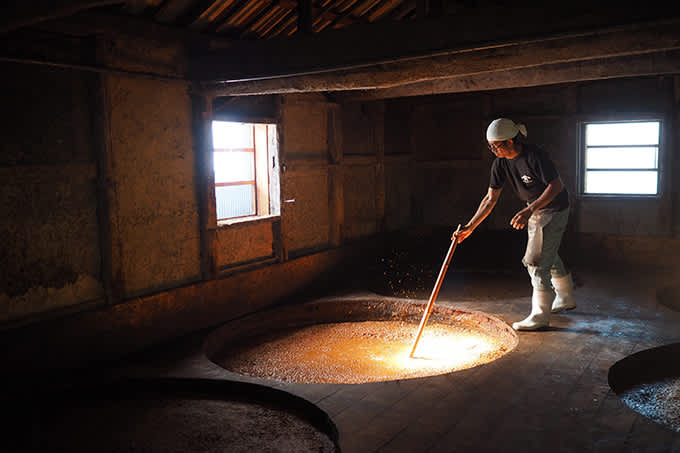
People don’t make soy sauce, bacteria do—and they have done so on Shodo Island for centuries. At Yamaroku Shoyu, which welcomes over forty thousand visitors each year on its brewery tour, the owner is happy to give credit where credit is due. Yamamoto Yasuo, the fifth-generation owner, explains that it is the bacteria and yeast fungus in the wooden brewing barrels and in the mud walls and wooden beams of his warehouse that do the work. His job is simply to take care of them so that they can do their job well.

Because each brewery has a different mixture of bacteria, each brewery produces a soy sauce with its own unique flavor. This means that on Shodo Island, with twenty soy-sauce breweries, there are twenty varieties of shoyu, each with its own distinctive taste.

Yamaroku’s product line includes its flagship shoyu, the rich, double-brewed Tsurubishio, aged for four years and delicious on tonkatsu (pork cutlets); and Kikubishio, aged for one and a half to two years and made with Tanbaguro (black soybeans) for a deep, strong flavor.

For a taste of Yamaroku’s soy sauce, head to Nijushi no Hitomi Eigamura (Twenty-Four Eyes Movie Village), a preserved movie set open to tourists and located a twenty-minute drive from the brewery. There, you can enjoy a plate of crispy fried pork with sauce made from a mixture of the brewery’s Moromichan and Kiku Tsuyu. Finish things off with soy-sauce soft-serve ice cream made with Yamaroku’s Tsurubishio.
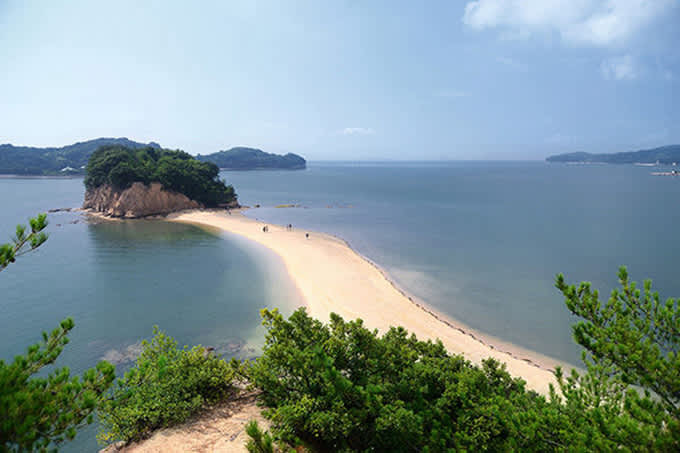
Contact Information
Shimayado Mari
2011 Noma-ko, Shodoshima-cho, Shozu District, Kagawa Prefecture 760-4421
Takao Nouen Olive Farms
1277-1 Ikeda, Shodoshima-cho, Shozu District, Kagawa Prefecture 761-4301
Nakabuan
1385 Yasuda-ko, Shodoshima-cho, Shozu District, Kagawa Prefecture 761-4411
Yamaroku Shoyu
1607 Yasuda-ko Shodoshima-cho, Shozu District, Kagawa Prefecture 761-4411
How to Get There
Shodo Island is located in the Seto Inland Sea between Japan’s main islands of Honshu and Shikoku. It is part of Shikoku in its Kagawa Prefecture and can be reached only by ferry. The island itself has several ports that are served by ferries from ports on Shikoku (Takamatsu) and on Honshu (Himeji, Hinase, Shin-Okayama, and Uno, as well as Kobe on weekends and holidays). On the island, a bus network connects the ports to major tourist attractions. Rental cars and rental bicycles are also available.
Recommended Itineraries
Shodo Island has beautiful beaches along its coast and a forested, mountainous interior. Walk along Angel Road, a sandbar that connects Shodo Island to three smaller islands at low tide, or head inland to admire the Senmaida terraced rice fields. In fall, the gorge Kankakei is ablaze with autumn colors. Hop aboard the ropeway to admire the gorge from above, and marvel at the incredible views from the upper station.
Related Links
Kagawa Official Tourism Website (English)
Shodoshima TabiNabi (Japanese)
Takao Nouen Olive Farms (Japanese)
Setouchi Islands (English)
Map
Featured Cuisine
Shodo Island is a gourmet’s paradise. The island produces olive oil, somen (thin wheat noodles), and shoyu (soy sauce). Olive-oil production began on the island over one hundred years ago and continues today at several olive farms. Shodo Island’s hand-stretched tenobe somen is considered one of Japan’s three best somen. The thin wheat noodles are a refreshing summer staple across the country. Soy sauce has been brewed on Shodo Island for approximately four hundred years. Many producers on the island continue to brew shoyu the traditional way in wooden barrels, which creates a deep, rich flavor.
-
Author
Author: Helen
Helen hails from a small town in Central Canada. Shortly after completing an honors degree in history, a desire to study karate in its birthplace drew her to Japan. Since arriving in 2006, she has earned her second dan in Goju-ryu karate, fallen head-first into Japanese culture by way of cross-cultural marriage, and written about Japan for a variety of publications. She loves traveling by Shinkansen, curling up under a heated kotatsu blanket, and eating anything with mochi.
All information is correct as of the time of writing.
Please check for the latest information before you travel.





















































